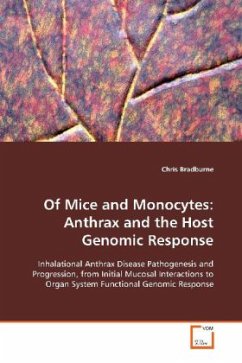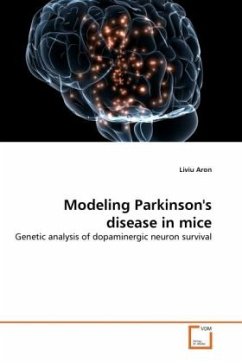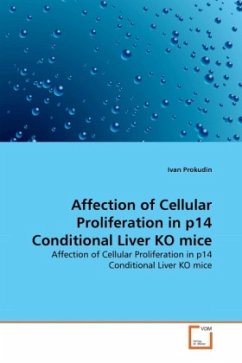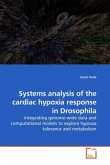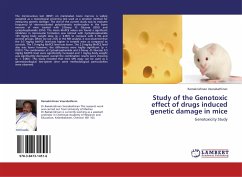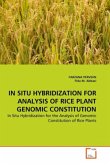Here we investigate anthrax invasion across
epithelial monolayers, human monocyte genomic
responses, and mouse genomic responses in spleens,
lungs, and livers. Differences in response to
toxigenic, and non-toxigenic anthrax strains are
discussed and described. Interestingly, epithelial
monolayers containing human THP-1 cells expressing a
macrophage phenotype showed increased permeability
and bacterial invasion than with just epithelial
cells alone. In fact, apoptotic pathways and
mediators in THP-1 cells appear to be repressed upon
challenge by toxigenic strains, and more activated
in challenges by non-toxigenic strains. We observed
an upregulation of the apoptotic inhibitor cFLAR
during toxigenic infection of human monocytes, and a
phenotypical delay in apoptosis for the toxigenic
strain-challenged cells. In the mouse model, CASH,
the mouse homologue of the human cFLAR, is induced
and the apoptotic response is suppressed in liver,
an organ with a large proportion of monocyte-derived
Kupffer cells. These results indicate a role for the
delay of cFLAR-mediated apoptosis as a key virulence
factor in the disease.
epithelial monolayers, human monocyte genomic
responses, and mouse genomic responses in spleens,
lungs, and livers. Differences in response to
toxigenic, and non-toxigenic anthrax strains are
discussed and described. Interestingly, epithelial
monolayers containing human THP-1 cells expressing a
macrophage phenotype showed increased permeability
and bacterial invasion than with just epithelial
cells alone. In fact, apoptotic pathways and
mediators in THP-1 cells appear to be repressed upon
challenge by toxigenic strains, and more activated
in challenges by non-toxigenic strains. We observed
an upregulation of the apoptotic inhibitor cFLAR
during toxigenic infection of human monocytes, and a
phenotypical delay in apoptosis for the toxigenic
strain-challenged cells. In the mouse model, CASH,
the mouse homologue of the human cFLAR, is induced
and the apoptotic response is suppressed in liver,
an organ with a large proportion of monocyte-derived
Kupffer cells. These results indicate a role for the
delay of cFLAR-mediated apoptosis as a key virulence
factor in the disease.

